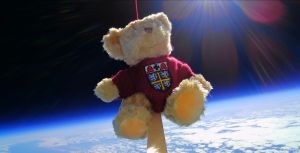Stories from Castle
Castle – Hatfield Day 2025
Well, what a weekend! A WIN for Castle at this year’s Castle X Hatfield Day!
Looking back at the history books with a win in 2023, a loss in 2024, Team Castle was on a mission to set the record straight and bring the trophy back this year.
The weekend began with the Opening Ceremony hosted at Castle. With the Keep and Great Hall lit up in Red and Blue, we welcomed Hatfield. The evening was opened by performances from Kinky Jeff and the Swingers and Castle X Hild Bede cheer. As the night got underway, the loaded fries and inflatables proved popular and Darts took place in the Undie, as the first events of the weekend. Following a close match for Men’s Darts, Hatfield took the win. Despite our Women’s Darts team turning out in force, college rivalry got a bit too much for Hatfield and they failed to put forward a team, so the points passed to us. The evening continued with live music by Magnolia and Prodigal Tongue in the Great Hall followed by a DJ in the Undie to conclude the celebrations.
Neck and neck going into Saturday, the matches provided a great day of a sporting skill and a nerve-racking battle for the silverware. The day started well with a surprising concession from Hatfield in what was expected to be their strongest performing sport of Lacrosse. However, with Hatfield clenching the win in Hockey, Frisbee and Women’s Netball by midday Hatfield were leading 15-12. A very close Men’s Football game took us to 3-all at the whistle and the game headed to penalties. The Castlemen remained collected and took the penalties by storm with a decisive 4-1 win. By 1pm Castle sat in the lead at 18-16. As the afternoon wore on we took a win in Volleyball (3-2) and Hatfield conceded Running and Chess, rightfully giving us the points with a 23-20 lead by 2pm. Whilst the sports continued at MC, back at home Croquet was underway in the Courtyard. With Hatfield turning up in tweed suits, name embossed croquet mallets and even an Alice in Wonderland inspired flamingo mallet, Josh (President) remained confident overseeing this gentlemanly game. Not to be put off by this show of expertise, our Croquet team put on a fabulous performance on home turf, really showing Hatfield the meaning behind ‘all the gear and no idea’ with a decisive 2-0 victory.
With the excitement palpable by 2:10pm it looked as though Castle had secured a large enough gap for the win. However, in a turn of events Castle lost perhaps the sport closest to all our hearts, Rounders, with Hatfield beating our 40 strong team with just 9 people, even with Tallis umpiring! By 4pm the scores sat at 37-32 to Castle. Castle had won two of the three Tennis matches and thrashed Hatfield at Mixed Netball, whilst Hatfield made a strong comeback with wins in all three Badminton matches and one Tennis match. By the 3:30pm we had just four sports left to play- Rowing, Cricket, Women’s Football and Squash. In the meantime, Feminist Society hosted a paint and sip in the Undie, offering an alternative involvement for the day’s events- thank you girls!
Back to the Wear and Castle’s performance of rowing kept up tradition, with the Women’s and Men’s VIII loosing to Hatfield but the Men’s IV taking a clean win. As I stood on the rowing start line with Hatfield exec, the tension was high as both colleges realised the trophy was either sides to win. As I battled the poor mobile signal by the river, it came through at 4:15pm that after a very close innings Castle had unfortunately lost cricket to Hatfield. By 4:30pm the mood was lifted as Women’s Football had a fabulous match winning on penalties (Hatfield better up their penalty game!) which brought us back into contention. With just one point separating Castle and Hatfield and only the Novice mixed VIII and the Squash games to go, stress was high going into the final stages of the day! The closing minutes of the event saw a rematch of the 2023 finale of Castle X Hatfield Day with the success of the day riding once again on the points of the Novice VIII race. There were three points up for grabs- if Castle obtained them we had a guaranteed win, if Hatfield took them Squash would be the decider. As both crews aligned at the start line the nerves were paramount as the legacy of this year’s sports teams sat on the shoulders of Amelie (cox) and her novice crew. And were off! The race began with a strong start whilst Oscar (President UCBC), myself, Flo (Novice Captain UCBC) and countless UCBC members, Hatfield’s exec and HCBC Women’s Captain ploughed through unsuspecting tourists as we raced along the river path to cheer on our teams. With a very close race and an excellent coxing line from Amelie, Castle took the win by 1/3rd a boat length to cheers and whoops from supporters on Kingsgate Bridge. Just as the race finished the squash results came through. After a valiant effort, Castle lost to Hatfield by one game. However, the celebrations had already began as with the Novice win, Team Castle pipped Team Hatfield to the post, winning Castle X Hatfield Day 2025!
Swiftly after the sports it was onto Hatfield for formal, which can only be described as an experience for the senses, far different from our college decorum. Spoon banging and chanting opened the formal, with this interactive performance continuing until the arrival of High Table. With High Table in position the formal took on a court manner, with the Master putting the gavel to good use whilst we tried to determine the winner of a new award introduced this year for the person who took part in the most winning teams that day. The award went to Pierre from Hatfield for taking part in 3 winning teams. Once all was settled, the new but old (had been lost and then found) original Castle X Hatfield Day trophy was awarded with an eruption of applause and some friendly college rivalry from Castle guests. Following the dinner, the ‘Treaty of Palace Green’ was amended and signed by Mimi (Castle) and James (Hatfield) as next year’s custodians of the event. The night was concluded in the most appropriate manner with pints in Hatfield Bar.
A massive thank you to all that took part and for bringing such pride and enthusiasm in representing Team Castle and leading us to victory! The trophy is now on display in the Undie behind the bar and long may it stay there!
Floreat Team Castle
Georgie,
Castle Union and Societies Officer 2024/25
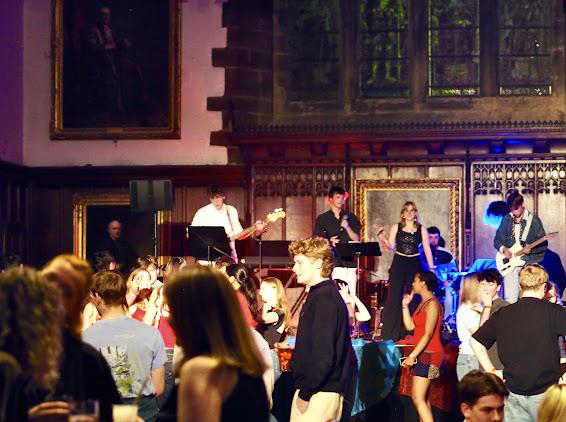
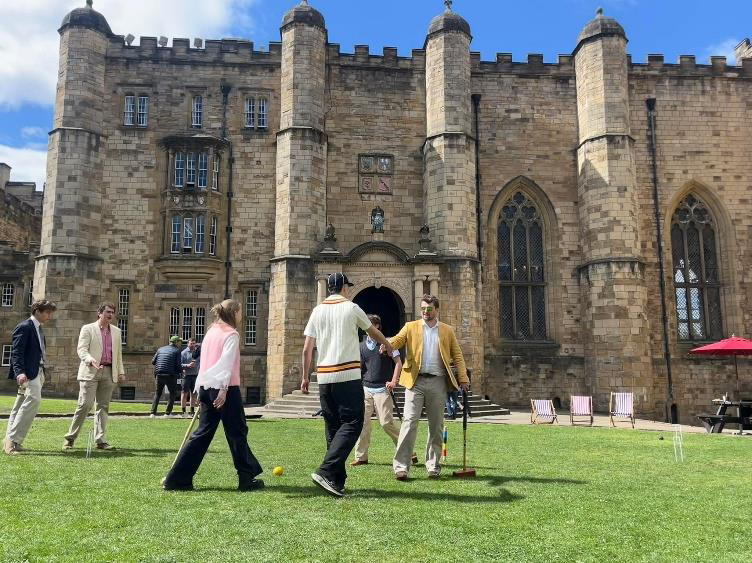
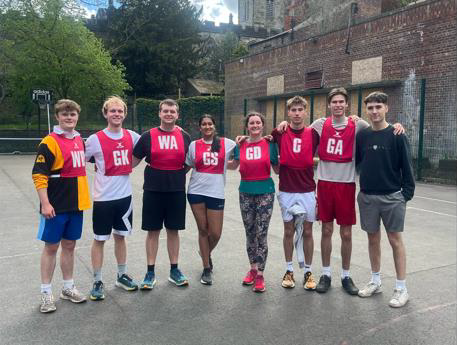
A Tale of Castle Kittens
A number of our alumni will, by now, be aware that the first phase of restoring our beautiful 10th Century Norman Chapel has now been completed. But not everyone will know about the cats who have taken up residence in the trench created as part of the works.
The initial restoration work for the chapel, which concluded earlier this year, involved building a five-metre-deep trench around the outer wall of the chapel, to prevent the rapid deterioration of the 952-year-old stonework and inform how best to preserve the chapel in future. The trench is also crucial in allowing the structure to dry over the next five years.
As part of the restoration work, we made many interesting finds, including more information about a diet of people who lived in and around the Castle as well as a worn silver halfpenny. The discovery of animal remains in the trench can help us piece together stories of past environmental conditions, agricultural patterns and even historic pets. From a large amount of animal remains found at Durham Castle, we know that people enjoyed a rich and varied diet that included cattle, sheep and pigs. We also found a large number of fish bones and oyster shells – the latter being found in the Chapel’s walls during the archaeological work. Cheap and readily available, oysters were a common food for the working class, and once eaten they could be repurposed as building materials.
One of the things we did not expect was to find a mother cat and kittens living in a gap in the Castle wall, just above the Norman Chapel. As the mother cat was raising her kittens at the time, the workers installed a cat flap to ensure the cat family could come and go freely, until the kittens were old enough to go out on their own.
Earlier this year castle staff spotted a new litter of kittens around the North Terrace. In order to help kittens survive the winter, we employed a team of Castle staff volunteers to help re-home the cats. Over the course of a couple of weeks our volunteers be-friended kittens, took them in for veterinary checks and found them permanent homes.
“It’s not every day that you get to rescue a kitten” commented one of our volunteers.
It has now been a couple of months since the kittens have been rescued and they have settled into their new homes. We also plan to trap and neuter the adult cats to keep them healthy and help us control the number of kittens around the College.
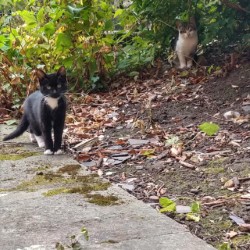

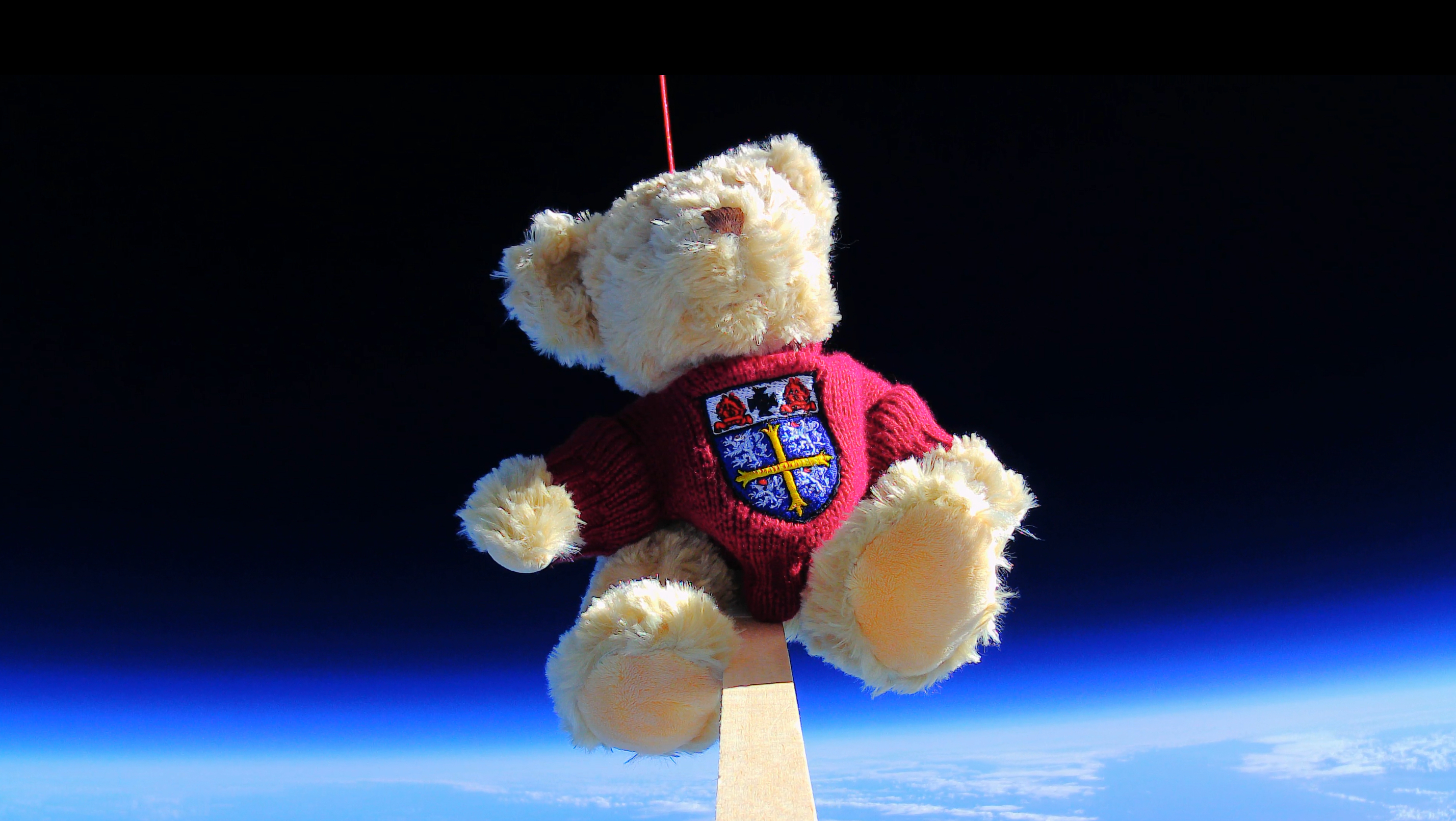
University College becomes the first Durham College to go to space
Castle has made history by becoming the first college of a UK university to send an item – our beloved castle teddy – to space.
The project has been spearheaded by Benjamin Kolicic, a third-year mathematics student at University College, and involved a team of STEM and non-STEM students. The venture has been quite a logistical feat with students designing bespoke software which could be used to generate a launch location and figuring out where to source the necessary materials.
In the end the teddy bear (which was fitted with a GPS tracking system), was launched from Durham’s Observatory Hill. Although the teddy went slightly off track on it’s return from space, ending up in the North Yorkshire moors, Benjamin and Xander Spencer-Jones (a fellow Castle student) were able to retrieve it after receiving a call from a local farmer who spotted the bear on the edge of his field.
Full of unexpected twists and turns – the project has been a true story of perseverance. From the strong winds which are part and parcel of Durham’s near coastal location, to realising that the GPS system was broken the day before the planned launch – Castle Spaceflight team faced a number of challenges along the way. In fact, locating the teddy after it landed in the North Yorkshire moors cost Benjamin two pairs of shoes!
The moors are very hilly, lots of valleys, which made it hard to find – we thought we’d lost it, but later it turned out we were only about two kilometres off.
If it landed anywhere in the trees and forests, there’s no way we would have found it. We launched on a Thursday, and the farmer called us on the next Wednesday.
We were incredibly lucky, looking at the video.
The project received funding from College, as part of our “We Are Castle” initiative, and we are so proud of the whole team’s achievements. Benjamin and the Castle Spaceflight team are currently reviewing and editing the footage, which was retrieved together with the teddy, and they hope to edit it into a short documentary which will be shown in the Great Hall later this academic year.
You can view a teaser footage from the launch on University College Instagram and Facebook pages and by clicking on the image of the teddy below.

